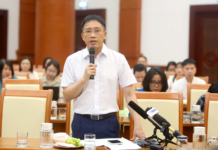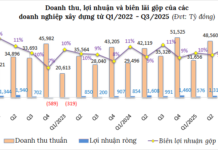
|
Nguyen Thi Hong, Governor of the State Bank of Vietnam
|
First and foremost, the Governor of the State Bank expressed her appreciation for the Supervisory Team’s thorough and comprehensive report on their findings. She acknowledged the challenging context in which Resolution 43/2022/QH15 was implemented, marked by unprecedented global and domestic economic complexities, tight monetary policies in various countries, difficulties in the real estate market, and geopolitical conflicts. As a member of the government, she witnessed the determination and efforts of the Prime Minister, Deputy Prime Minister, and other members to implement programs and policies aimed at alleviating economic hardships.
Following the adoption of Resolution 43/2022/QH15, the government assigned the State Bank to take the lead in coordinating with relevant ministries to develop and advise on Decree No. 31. The Governor highlighted the exceptional dedication and effort invested by the State Bank in organizing and implementing this program, including holding numerous conferences and requiring provincial and municipal branches to conduct local deployments.
Explaining the low achievement of the policy, the Governor clarified that this program, as outlined in Resolution 43/2022/QH15, aimed to support businesses with the potential to recover and repay their loans, rather than providing assistance to all struggling enterprises. She emphasized that the lending capital for this program was sourced from credit institutions’ deposits from the public, with only the 2% interest rate support funded by the state budget. Therefore, credit institutions had to adhere to existing legal regulations and ensure loan recoverability in their lending decisions. The disbursement rate, she noted, depended largely on the decisions and interactions between businesses and credit institutions.
Addressing the assessment regarding the insufficient depth and breadth of information dissemination to eligible borrowers, the Governor explained that, in addition to organizing conferences, the State Bank had instructed its provincial and municipal branches to collaborate with local departments, sectors, and associations to hold meetings connecting businesses and banks. The media also played a proactive role in disseminating the Prime Minister’s, the government’s, and the State Bank’s directives, while credit institutions publicized relevant information on their websites to ensure borrowers’ awareness.
The Governor expressed her resonance with the insights shared by National Assembly delegates, acknowledging that policies might not always align perfectly with the realities on the ground, especially in unprecedentedly complex situations. However, she emphasized the importance of drawing lessons from this experience to enhance future support for businesses and citizens. She stressed that the purpose of the interest rate support policy was not to encourage businesses to take out loans solely because of the subsidy but to make informed decisions about borrowing for viable purposes and with a capacity to repay.




































